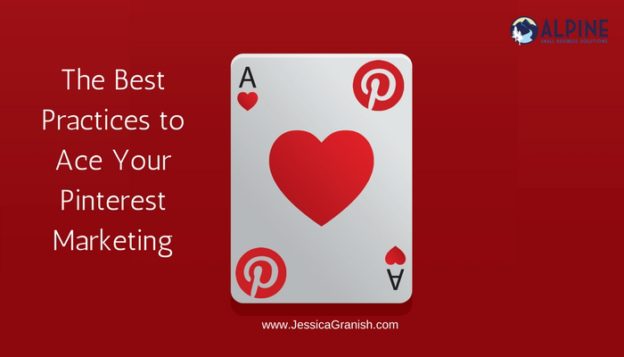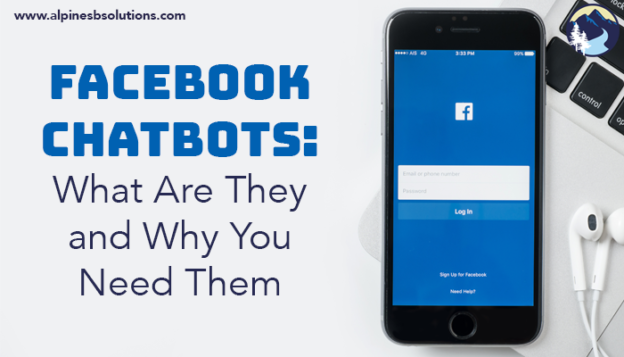Delegation is another one of those entrepreneur buzzwords that people love or hate. Those who mastered the delicate art of delegation sing its praises. Others shudder when they think of delegation, either because of a terrible experience or because they can’t imagine it actually working for them.
Here’s the thing. Delegation is great for anyone in any situation. Delegation is a powerful tool for freeing up your time and energy, finding someone better suited for the task at hand, and using your company’s limited resources better. It is often the first step in major growth for your business.
Of course, delegating for the first time can be nerve wracking. But, you have a lot of control over the end result with how you delegate. Follow these delegation do’s and don’ts for a positive (and quite possibly life-changing) delegation experience.
Delegation Do’s
- Do Articulate Priorities. If your employee must choose between making the
 deadline or taking a bit more time to submit a quality project, which do they choose? Is the underlying goal of the delegation to train the employee to take over the task (so they should bring any questions to you to learn the correct process the first time around)? Or is it to free up your time (so they should work on trying to fix the problem on their own first)? Your employee will need to make decisions regarding communication, time commitment, etc. Making sure they understand your priorities will help them work for you better.
deadline or taking a bit more time to submit a quality project, which do they choose? Is the underlying goal of the delegation to train the employee to take over the task (so they should bring any questions to you to learn the correct process the first time around)? Or is it to free up your time (so they should work on trying to fix the problem on their own first)? Your employee will need to make decisions regarding communication, time commitment, etc. Making sure they understand your priorities will help them work for you better. - Do Create Guidelines. Be sure the employee knows their expected time and effort commitment. You don’t want to be caught off guard discovering the employee spent several hours on a task you expected to take thirty minutes. Establish clear boundaries for how long they should work on this project in relation to their other normal duties. Set guidelines as well on the line of communication. If your employee has questions, do they go directly to you? Is there a chain of command they should follow? When (if ever) is it appropriate to contact you outside of office hours regarding the project? Communicate expectations clearly from the start to avoid misunderstandings or lost time.
- Do Provide Support. The sink or swim strategy is not a great leadership approach. Do what you can to empower your employee to succeed. Provide examples of the task or comparable work. Gather up all the login information into one place. Check in at certain points to see how they are doing and provide opportunity for them to ask you questions. Giving this support helps set up the employee for success.
- Do Let the Employee Feel Comfortable Saying No. We may think the employee is
 ready for greater responsibility. But, if they genuinely do not feel ready it may be a bad experience for them. Try to build up their confidence and remind them that you feel they are ready. If that fails and they still are uncomfortable at the thought of the project, find a new employee. It is not worth the anxiety it will cause your original pick.
ready for greater responsibility. But, if they genuinely do not feel ready it may be a bad experience for them. Try to build up their confidence and remind them that you feel they are ready. If that fails and they still are uncomfortable at the thought of the project, find a new employee. It is not worth the anxiety it will cause your original pick. - Do Discuss the Experience After They Finish. Take a few minutes to talk with the employee about how things went. See if there is anything you could have done differently to make the experience better. Ask if they are comfortable doing the task again. If the employee made mistakes, use this time as a learning opportunity to gently guide them. Finally, thank them for their work and find something to praise about their output.
Delegation Don’ts
- Don’t Micromanage. The purpose of delegation is for you to no longer deal with the project! Even if this assignment is a training opportunity, you still need to provide your employee with enough space to learn on their own. Employees know when their boss does not trust them, which can really undermine their confidence in their own ability. Showcase your belief in your employee by taking your hands off the reins, and keeping them off.
- Don’t Underestimate the Project’s Timeline. When giving your employee a
 deadline, be cautious about underestimating the length of time the project will take. It may only take you a week, but your employee may need to do outside research adding a day or two. Or maybe your employee hits some unexpected roadblocks, requiring you to take the time to provide guidance or assistance. Always estimate more time to provide a buffer in case things don’t go as smoothly as planned.
deadline, be cautious about underestimating the length of time the project will take. It may only take you a week, but your employee may need to do outside research adding a day or two. Or maybe your employee hits some unexpected roadblocks, requiring you to take the time to provide guidance or assistance. Always estimate more time to provide a buffer in case things don’t go as smoothly as planned. - Don’t Delegate What You Should Be Doing. Yes, everyone can and should delegate tasks. But not every task can and should be delegated. Some tasks do require your expertise or insight. Be selective in what you delegate, keeping the important tasks on your to-do list.
- Don’t Delegate Because You Hate the Project. No one likes the boss who uses
 delegation to avoid doing unpleasant tasks. Good leadership means being willing to do the menial, the unappealing, and aggravating tasks for the good of the business. Delegation is about making your company more efficient. Passing off tasks because you hate them, not because someone else should be doing them, is a bad management strategy. It’s tempting, but your employees will lose respect for you if you do it.
delegation to avoid doing unpleasant tasks. Good leadership means being willing to do the menial, the unappealing, and aggravating tasks for the good of the business. Delegation is about making your company more efficient. Passing off tasks because you hate them, not because someone else should be doing them, is a bad management strategy. It’s tempting, but your employees will lose respect for you if you do it.
You can make or break your delegation experience. Implementing the “dos” and avoiding the “don’ts” prepares you and your employee for a mutually beneficial experience. Your employee can learn or hone their skills while you get to remove something from your plate. If you are new to delegating, you can start off small. You will be surprised at how useful a tactic it can be in managing your business!




 about work at 5. When there is no firm end to the work day, it’s so much harder to transition from “work mode” to “living your life mode.” You feel guilty watching TV and wonder if you should go get that one article done. You daydream thinking of your to-do list. You always feel “on,” making it difficult to give yourself the
about work at 5. When there is no firm end to the work day, it’s so much harder to transition from “work mode” to “living your life mode.” You feel guilty watching TV and wonder if you should go get that one article done. You daydream thinking of your to-do list. You always feel “on,” making it difficult to give yourself the  Here is where you get to enjoy the freedom of being your own boss. Maybe your peak creativity hours are early morning and early evening. In the middle of the day, you suffer from the afternoon slump. So work in the peak hours and go workout or run errands when your brain power dips.
Here is where you get to enjoy the freedom of being your own boss. Maybe your peak creativity hours are early morning and early evening. In the middle of the day, you suffer from the afternoon slump. So work in the peak hours and go workout or run errands when your brain power dips. Once you create a schedule, protect it fiercely. Don’t check your email outside of work hours. Let your clients know what hours they can expect to reach you by phone…and don’t pick up if it’s outside of those (or work into your contract it’s a $75 fee every time they do). When you are done for the day, be done. Don’t fall into the trap of well I could get one more thing done. Allow yourself to rest and relax!
Once you create a schedule, protect it fiercely. Don’t check your email outside of work hours. Let your clients know what hours they can expect to reach you by phone…and don’t pick up if it’s outside of those (or work into your contract it’s a $75 fee every time they do). When you are done for the day, be done. Don’t fall into the trap of well I could get one more thing done. Allow yourself to rest and relax!
 Your body is remarkably like a machine. Optimal performance requires quality fuel, proper maintenance, and adequate rest. Skimp out on one of these areas and the performance suffers.
Your body is remarkably like a machine. Optimal performance requires quality fuel, proper maintenance, and adequate rest. Skimp out on one of these areas and the performance suffers. It’s time for improved organization. To many entrepreneurs, organization can seem like a luxury. Who has time to look for (and then implement) the best organizational system? But the longer you go without one, the more time you waste searching for that one filed buried under desktop folder after desktop folder.
It’s time for improved organization. To many entrepreneurs, organization can seem like a luxury. Who has time to look for (and then implement) the best organizational system? But the longer you go without one, the more time you waste searching for that one filed buried under desktop folder after desktop folder. This is another difficult mistake to stop engaging in. It’s all too easy to sit down at your desk in the morning…and never get up again. We falsely believe the best way to maximize our work is to maximize our hours working. In reality, our brains are much more efficient when we take breaks. Even just a few minutes every hour getting up and stretching can help your brain feel refreshed and ready to tackle whatever problem awaits you.
This is another difficult mistake to stop engaging in. It’s all too easy to sit down at your desk in the morning…and never get up again. We falsely believe the best way to maximize our work is to maximize our hours working. In reality, our brains are much more efficient when we take breaks. Even just a few minutes every hour getting up and stretching can help your brain feel refreshed and ready to tackle whatever problem awaits you. All too often we take on tasks that can and should be handled by someone else. We do this for many reasons. Maybe our team is so small we feel guilty passing along the task. Maybe we struggle with relinquishing control over our passion project. Maybe we worry it’ll take more time managing the employee than just doing it ourselves.
All too often we take on tasks that can and should be handled by someone else. We do this for many reasons. Maybe our team is so small we feel guilty passing along the task. Maybe we struggle with relinquishing control over our passion project. Maybe we worry it’ll take more time managing the employee than just doing it ourselves.

 A soft launch is a marketing effort that intentionally limits its scope to a smaller percentage of the target audience. The goal is to test the product among the small audience and tweak it as necessary before the product is available to everyone. The audience can be a small group within your target audience or a small group whose demographics are similar to your target audience (such as product testing in Canada, New Zealand, or Australia).
A soft launch is a marketing effort that intentionally limits its scope to a smaller percentage of the target audience. The goal is to test the product among the small audience and tweak it as necessary before the product is available to everyone. The audience can be a small group within your target audience or a small group whose demographics are similar to your target audience (such as product testing in Canada, New Zealand, or Australia). it’s released to everyone. Staff members can really focus on finding changes that need to be made because they won’t be spending as much time focused on various marketing efforts. This is really still a testing phase. It allows you to work out some of the kinks before you go big!
it’s released to everyone. Staff members can really focus on finding changes that need to be made because they won’t be spending as much time focused on various marketing efforts. This is really still a testing phase. It allows you to work out some of the kinks before you go big! An effective campaign for a hard launch, in contrast, could take several weeks or even months. On the flip side, the amount of time it takes to see results comes in much quicker with a hard launch due to the expanded marketing efforts. Of course, in the long run, a soft launch does take longer because it’s followed by a hard launch. But when comparing a soft launch to a hard launch, a soft launch is much shorter.
An effective campaign for a hard launch, in contrast, could take several weeks or even months. On the flip side, the amount of time it takes to see results comes in much quicker with a hard launch due to the expanded marketing efforts. Of course, in the long run, a soft launch does take longer because it’s followed by a hard launch. But when comparing a soft launch to a hard launch, a soft launch is much shorter. Different marketing needs will call for different strategies. For newer products, you will likely want to do a soft launch. This will allow you to gather valuable information on your target audience to better tailor the marketing efforts when you introduce the product. For products you are less confident in, a soft launch also works well. You’ll gain confidence after seeing how the product performed in the smaller audience and know you made the changes needed for it to be ready for a full audience launch. For a product that will be launched in a more competitive market, a hard launch will be better since it allows for a wide marketing effort.
Different marketing needs will call for different strategies. For newer products, you will likely want to do a soft launch. This will allow you to gather valuable information on your target audience to better tailor the marketing efforts when you introduce the product. For products you are less confident in, a soft launch also works well. You’ll gain confidence after seeing how the product performed in the smaller audience and know you made the changes needed for it to be ready for a full audience launch. For a product that will be launched in a more competitive market, a hard launch will be better since it allows for a wide marketing effort.
 Ensure your website is mobile friendly. Busy shoppers purchase on their phone. A difficult to use app will lose you customers faster than people lose their diet resolutions at the company holiday party. Plug your url into
Ensure your website is mobile friendly. Busy shoppers purchase on their phone. A difficult to use app will lose you customers faster than people lose their diet resolutions at the company holiday party. Plug your url into  Pick a season’s greetings. Some audiences are offended with the use of “Merry Christmas” while others are equally offended by the lack of “Merry Christmas.” Know which greetings best suit your brand and your target audience. “Happy Holidays” is a safe bet since it recognizes the numerous celebrations.
Pick a season’s greetings. Some audiences are offended with the use of “Merry Christmas” while others are equally offended by the lack of “Merry Christmas.” Know which greetings best suit your brand and your target audience. “Happy Holidays” is a safe bet since it recognizes the numerous celebrations. Santa. An art supply store can organize a holiday card decorating workshop. Any store can throw a holiday party with a tree lighting and carol singing. Make a fun event, ideally connected to your business, to draw people to your store. They’ll be reminded of your great selection, which hopefully will get them thinking about crossing items off their shopping list with your products.
Santa. An art supply store can organize a holiday card decorating workshop. Any store can throw a holiday party with a tree lighting and carol singing. Make a fun event, ideally connected to your business, to draw people to your store. They’ll be reminded of your great selection, which hopefully will get them thinking about crossing items off their shopping list with your products.
 Strategic keyword integration helps optimize your pins. Scatter keywords throughout the image file names, pin descriptions, board names, and board descriptions.
Strategic keyword integration helps optimize your pins. Scatter keywords throughout the image file names, pin descriptions, board names, and board descriptions. Skip the highly promotional “buy this item” pins. These won’t perform well since using sales-y words like buy and sale anger the algorithm.
Skip the highly promotional “buy this item” pins. These won’t perform well since using sales-y words like buy and sale anger the algorithm. Pinterest requires you to “feed the beast.” The algorithm rewards consistency. It’s better to regularly pin rather than go on a one hour straight pinning spree. Aim for between
Pinterest requires you to “feed the beast.” The algorithm rewards consistency. It’s better to regularly pin rather than go on a one hour straight pinning spree. Aim for between
 exposed to a wide range of professionals you otherwise might not come into contact with. When they interact with your post, you can send them a friendly message to connect and discuss the topic further. It’s a more personable way to acquire new connections across cyberspace.
exposed to a wide range of professionals you otherwise might not come into contact with. When they interact with your post, you can send them a friendly message to connect and discuss the topic further. It’s a more personable way to acquire new connections across cyberspace. “discover” to bring up suggested groups. For
“discover” to bring up suggested groups. For  When posting in audience tailored groups, provide how-to articles, guides, and other pieces of information packed content. That’s the information they are looking for in these groups, and it will build your reputation in the groups as a leader.
When posting in audience tailored groups, provide how-to articles, guides, and other pieces of information packed content. That’s the information they are looking for in these groups, and it will build your reputation in the groups as a leader.
 The Facebook Chatbot allows companies to create responses with video, audio, GIFs, files, and text. This variety allows for a high amount of personalization to your company’s brand. The bot can be built by you or by Facebook’s bot creating partners. The bots are designed to learn as they go. The more they are used, the smarter they become.
The Facebook Chatbot allows companies to create responses with video, audio, GIFs, files, and text. This variety allows for a high amount of personalization to your company’s brand. The bot can be built by you or by Facebook’s bot creating partners. The bots are designed to learn as they go. The more they are used, the smarter they become. Customers adapted to this quick reply system, turning less and less to calling in and instead typing in their requests. This set the stage for Chatbots to take off. Customers already turn to the web for assistance. What’s changed is the company’s ability to reply with intelligent, pre-crafted responses.
Customers adapted to this quick reply system, turning less and less to calling in and instead typing in their requests. This set the stage for Chatbots to take off. Customers already turn to the web for assistance. What’s changed is the company’s ability to reply with intelligent, pre-crafted responses.
 Bear Grylls is a well-known adventurer, writer, and TV personality. In his show “Running Wild with Bear Grylls” he takes a new celebrity on an adventure, encountering
Bear Grylls is a well-known adventurer, writer, and TV personality. In his show “Running Wild with Bear Grylls” he takes a new celebrity on an adventure, encountering  Vince Lombardi is one of the greatest professional football coaches of all time, leading the Green Bay Packers to victory time and time again. You can get lost reading through a collection of his quotes, as each one is an inspirational landmine. When talking about coaching, he famously said “they call it coaching, but it is teaching. You do not just tell them…you show them the reasons.” Lombardi took the time to explain to his players the reasoning behind his choices and strategies, rather than simply yelling orders. This, arguably, helped improve the coach-player relationship, team cohesion, and the players’ motivation (especially when things got rough).
Vince Lombardi is one of the greatest professional football coaches of all time, leading the Green Bay Packers to victory time and time again. You can get lost reading through a collection of his quotes, as each one is an inspirational landmine. When talking about coaching, he famously said “they call it coaching, but it is teaching. You do not just tell them…you show them the reasons.” Lombardi took the time to explain to his players the reasoning behind his choices and strategies, rather than simply yelling orders. This, arguably, helped improve the coach-player relationship, team cohesion, and the players’ motivation (especially when things got rough). Miley Cyrus loves her fans so much that she has nicknamed them “Smilers” and makes sure to acknowledge them often, whether on tour or on
Miley Cyrus loves her fans so much that she has nicknamed them “Smilers” and makes sure to acknowledge them often, whether on tour or on  To say that the Kardashians have not been shy about exploiting their brands is like saying that fire is kind of hot. The Kardashian girls endorse clothing, makeup, perfume and more. What they know is that no business cycle lasts forever, so they are not shy about maximizing their potential while they can.
To say that the Kardashians have not been shy about exploiting their brands is like saying that fire is kind of hot. The Kardashian girls endorse clothing, makeup, perfume and more. What they know is that no business cycle lasts forever, so they are not shy about maximizing their potential while they can. Watching Geraldo Rivera bomb five tasks in a row was amusing and sad. Frankly, Geraldo’s ideas were good — 10 years ago, but did not resonate with company executives who were looking for forward thinking, innovative ideas that appeal to today’s consumers. Not to detract from his achievements, but Mr. Rivera thought that his past journalistic success would lead his team to winning each challenge; it did not. In fact, many younger people do not even know who he is. Geraldo is a forceful, strong-willed personality who does not take “no” for an answer. Maybe that’s the reason behind his success; however, when working with or leading a
Watching Geraldo Rivera bomb five tasks in a row was amusing and sad. Frankly, Geraldo’s ideas were good — 10 years ago, but did not resonate with company executives who were looking for forward thinking, innovative ideas that appeal to today’s consumers. Not to detract from his achievements, but Mr. Rivera thought that his past journalistic success would lead his team to winning each challenge; it did not. In fact, many younger people do not even know who he is. Geraldo is a forceful, strong-willed personality who does not take “no” for an answer. Maybe that’s the reason behind his success; however, when working with or leading a